Combining LED technology and medical research, several integrations have been revealed, showing the potential of the technology in healthcare applications and development.
LEDinside has collected some innovative examples of LED applications which create possibilities for future medical improvement.
Elastic Micro LED skin sensor system
In February 2018, a new ultrathin, elastic Micro LED display that fits snugly on the skin was developed by researchers at the University of Tokyo and Dai Nippon Printing (DNP) in an academic-industrial collaboration. The integrated biomedical sensor system, named “skin electronics” combines a flexible, deformable display with a lightweight sensor composed of a breathable nanomesh electrode and wireless communication module.
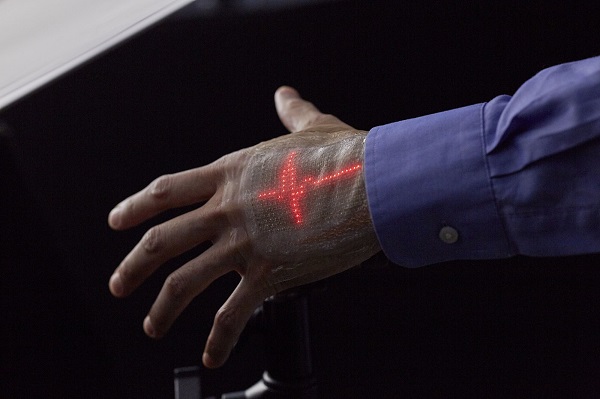
(Image: University of Tokyo)
The flexible skin electronics is able to measure medical data via the sensor and display the information on the screen while transmitting it to the cloud or other memory devices. The system was developed with the purpose to enhance information accessibility for the elderly or the infirm, who have difficulty operating and obtaining data from existing devices and interfaces.
The integrated skin sensor system is expected to enter the market in the next three years, according to the collaborated company, DNP. Currently the company is working on improving the reliability of the stretchable devices through optimizing its structure, enhancing the production process for high integration, and overcoming technical challenges such as large-area coverage.
Micro LED wearable device to stimulate hair growth
With the development of vertical Micro LED, the Korea Advanced Institute of Science and Technology (KAIST) has revealed a new application of regrowing hair for mice.
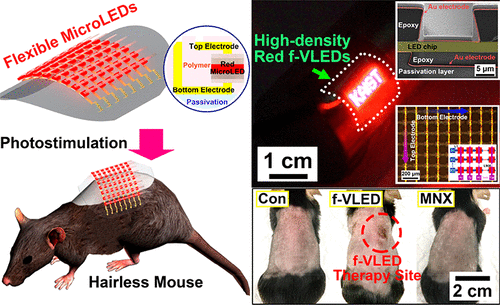
(Image: KAIST)
KAIST developed a wearable photostimulator made by a flexible array consisting of 900 red vertical Micro LED and used the device to treat mice with hair shaved. After 20 days of experiment, the mice that received the stimulation from the Micro LED device have grown longer hair in wider area in comparison with those with other treatment.
According to KAIST, the device used almost 1,000 times less power per unit area than a conventional phototherapeutic laser, and it did not heat up enough to cause thermal damage to human skin. The result suggested a new approach to cure hair loss issue for people.
Smart contact lenses for glucose monitoring and other applications
A Korean research team at the Ulsan National Institute of Science and Technology (UNIST) has release an application of smart contact lenses which is integrated with glucose sensors, wireless power transfer circuits and LED pixel to monitor. The device is able to monitor the glucose level in tears and provides instant sensing result via the embedded LED display.
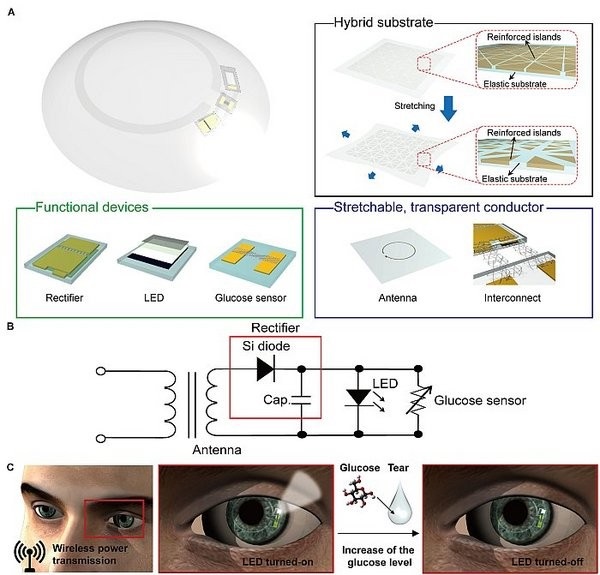
(Image: Park et al, 2018; Science Advances)
In addition, imec has presented its development of LED light integrated contact lenses as a result of collaboration with Ghent University and SEED, a contact lens producer. The device is designed to integrate transducers into lenses for diagnosing and treating ocular diseases. They also suggested that the lens could provide a wide range of applications such as drug-delivery systems eye treatments.
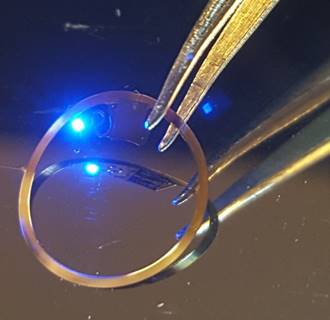
(Image: imec)
Implantable LED device for curing cancer
LED device could also be used to heal cancer, according to the research of Waseda University. The Japanese research team has an implantable device consisting of LED chips and bio-adhesive nanosheet which has successfully shrank the tumors in mice through photodynamic therapy.
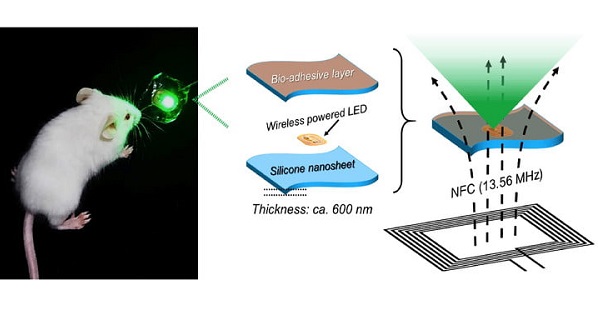
(Image: Toshinori Fujie)
The application can be attached onto the inner surface of animal tissue where it could release low intensity irradiation to treat targeted lesions with metronomic photodynamic therapy (mPDT), which is a treatment using special drugs and particular lights to kill cancer cells with low-dose in the long-term. By directly fixing the device with mPDT on the target tumor, it could reduce the threat to the healthy areas.
Flexible OLED sensor to monitor blood-oxygen
A flexible OLED sensor was developed by engineers at the University of California for detecting blood-oxygen levels of skin, tissue and organs. The OLED sensor assembled from a printed sheet of organic photo detectors on the top and organic red and infrared LEDs on the bottom. With the organic electronics printed on bendable plastic that molds to the contours of the body, the sensor can detect blood-oxygen levels at nine points in a grid and can be placed anywhere on the skin.

(Image: UC Berkely by Yasser Khan, Arias Research Group)
Through tracking blood-oxygen levels in a larger area, the OLED sensor could monitor healing wounds. The disorders such as diabetes, respiration diseases could also benefit from the application.





 CN
TW
EN
CN
TW
EN











